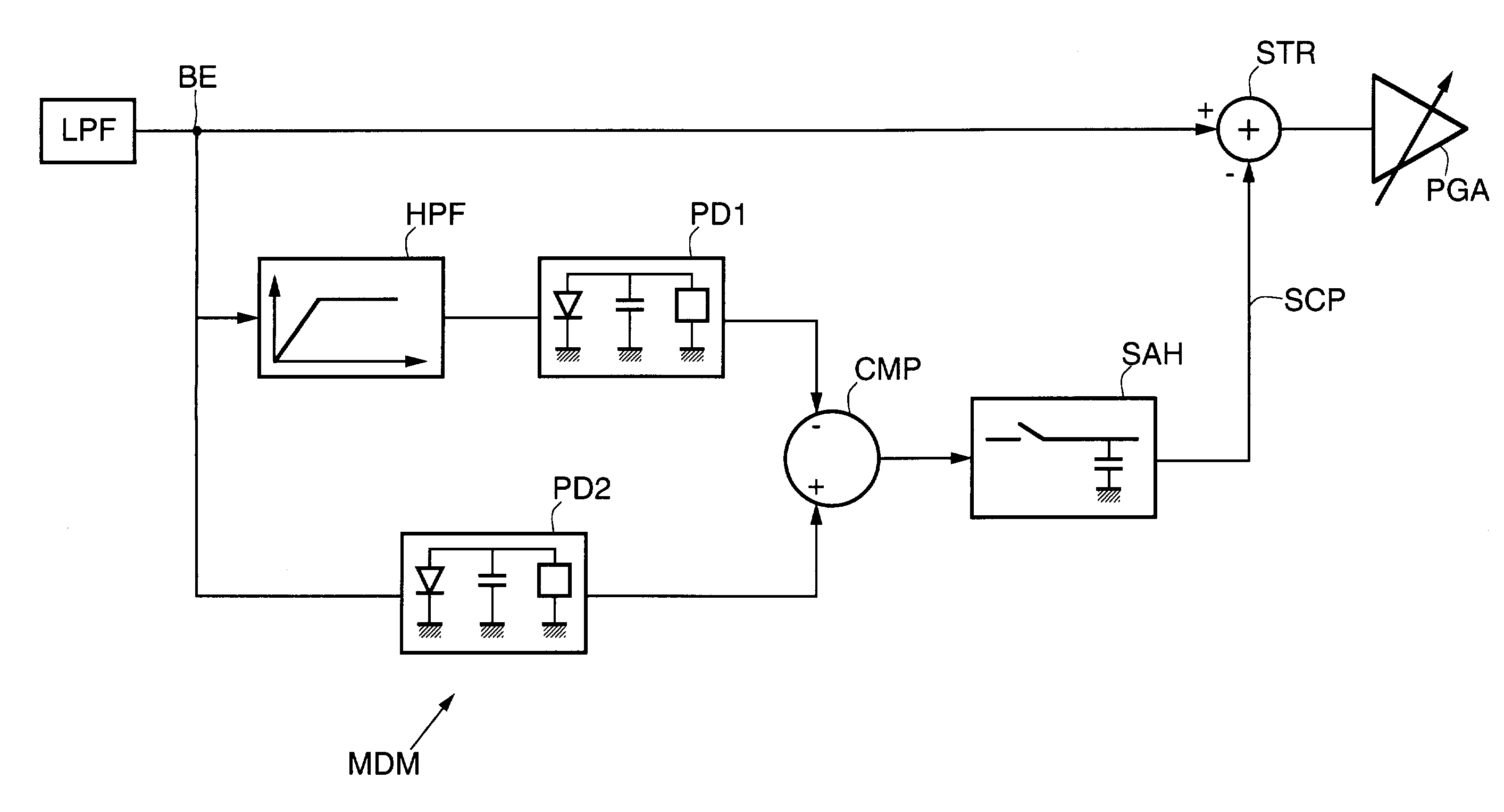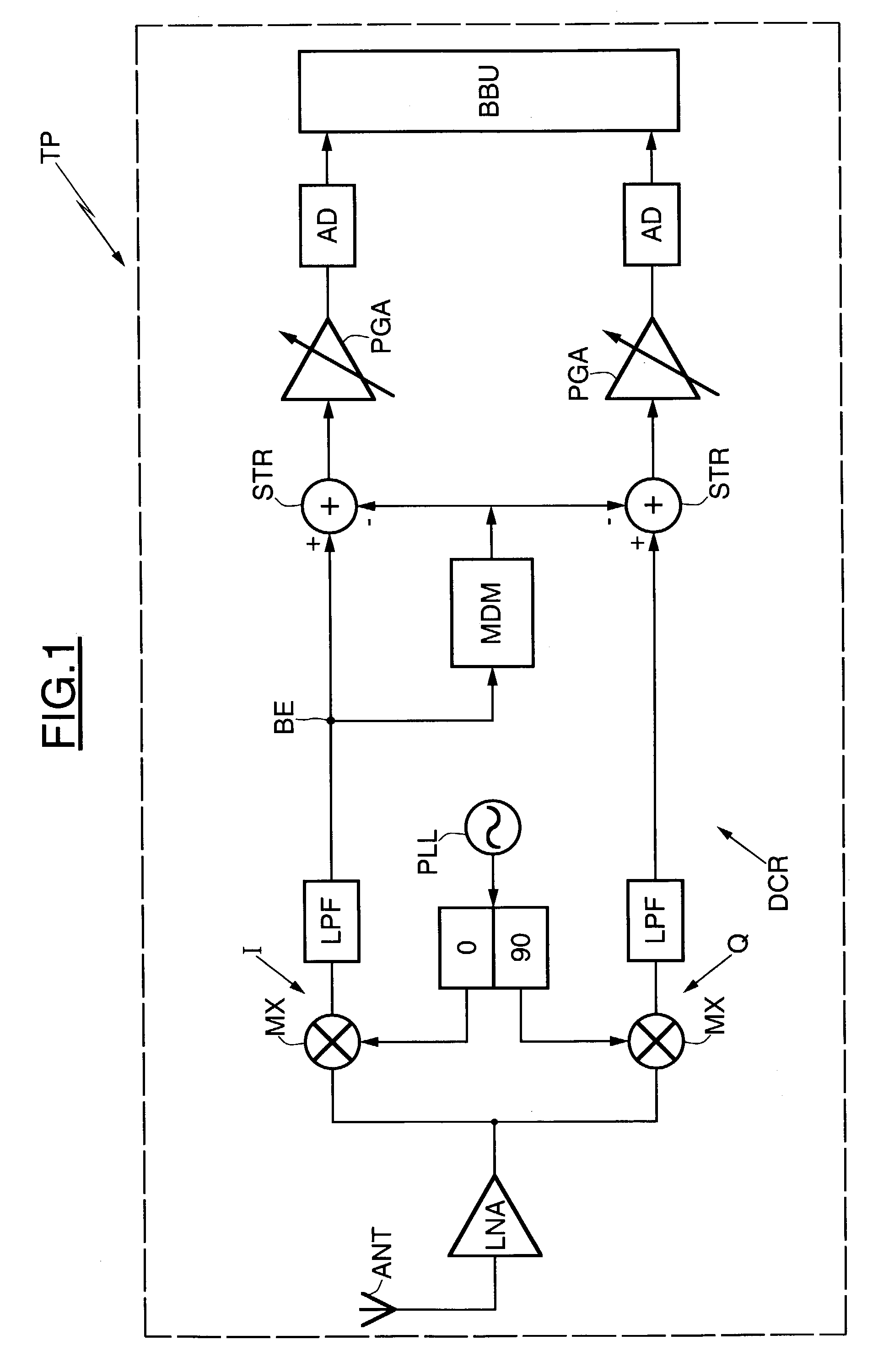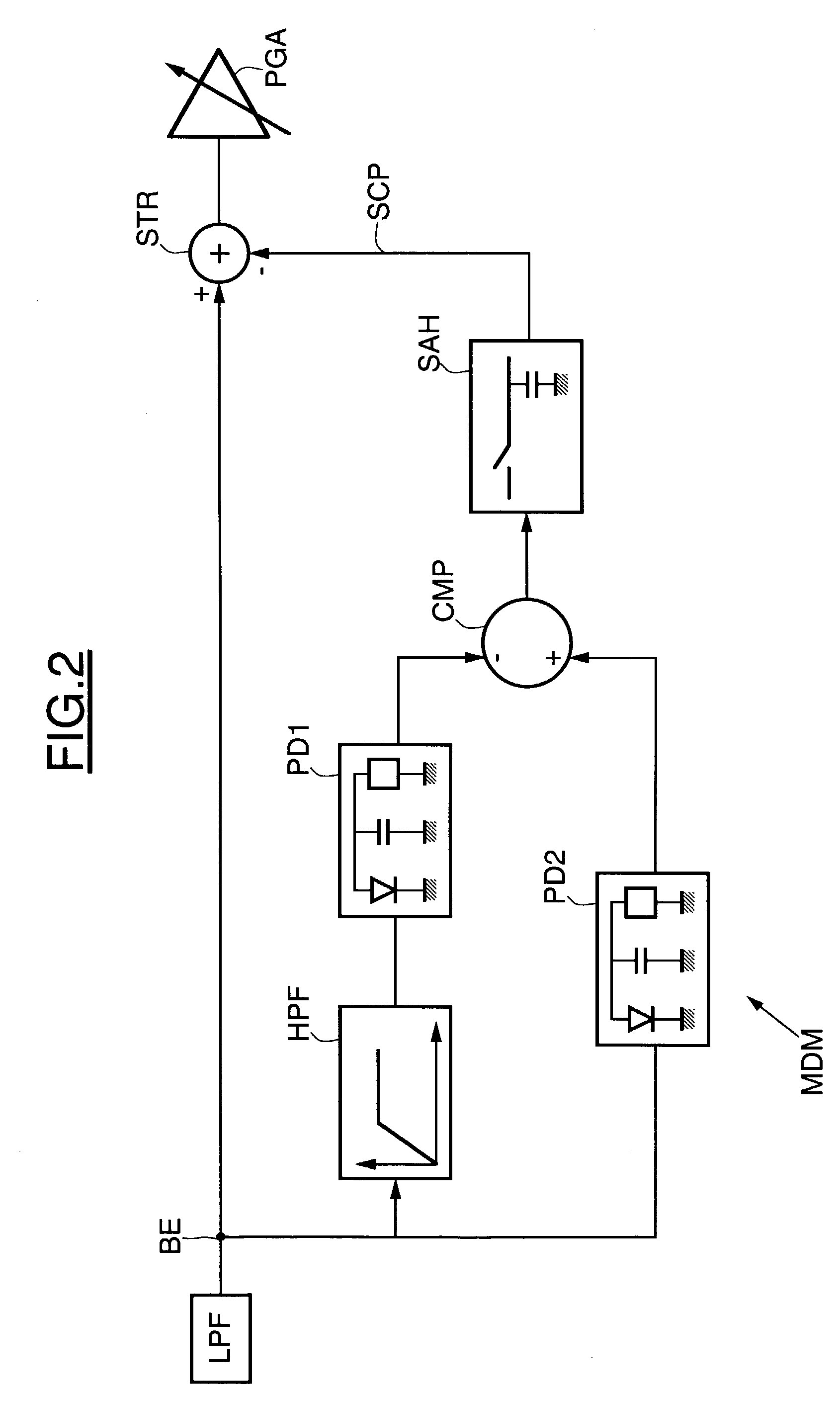Direct-conversion receiver for a communication system using a modulation with non-constant envelope
a direct conversion and receiver technology, applied in the field of cdma systems, can solve problems such as information loss, dc voltage offset and second-order distortion, and architecture unfortunately exhibits some drawbacks, and achieve the effect of improving the evaluation of dc offset voltag
- Summary
- Abstract
- Description
- Claims
- Application Information
AI Technical Summary
Benefits of technology
Problems solved by technology
Method used
Image
Examples
Embodiment Construction
[0029]In FIG. 1, the reference TP designates a remote terminal such as a cellular mobile telephone which is in communication with a base station. The cellular telephone TP comprises a direct-conversion receiver DCR connected to an antenna ANT for receiving an incident signal emanating from a transmission channel.
[0030]The direct-conversion receiver DCR comprises an analog stage connected to a digital stage. The digital stage is also referred to as a baseband processing unit BBU, and is connected across a pair of illustrated analog digital conversion stages AD. Conventionally, the analog stage comprises a low noise amplifier LNA and two processing pathways respectively including a mixer MX (transposition means), a conventional low-pass filter LPF and a programmable-gain amplifier PGA.
[0031]The two mixers MX respectively receive from a phase-locked loop PLL two signals mutually exhibiting a phase difference of 90 degrees. After frequency transposition in the mixers, the two processing...
PUM
 Login to View More
Login to View More Abstract
Description
Claims
Application Information
 Login to View More
Login to View More - R&D
- Intellectual Property
- Life Sciences
- Materials
- Tech Scout
- Unparalleled Data Quality
- Higher Quality Content
- 60% Fewer Hallucinations
Browse by: Latest US Patents, China's latest patents, Technical Efficacy Thesaurus, Application Domain, Technology Topic, Popular Technical Reports.
© 2025 PatSnap. All rights reserved.Legal|Privacy policy|Modern Slavery Act Transparency Statement|Sitemap|About US| Contact US: help@patsnap.com



